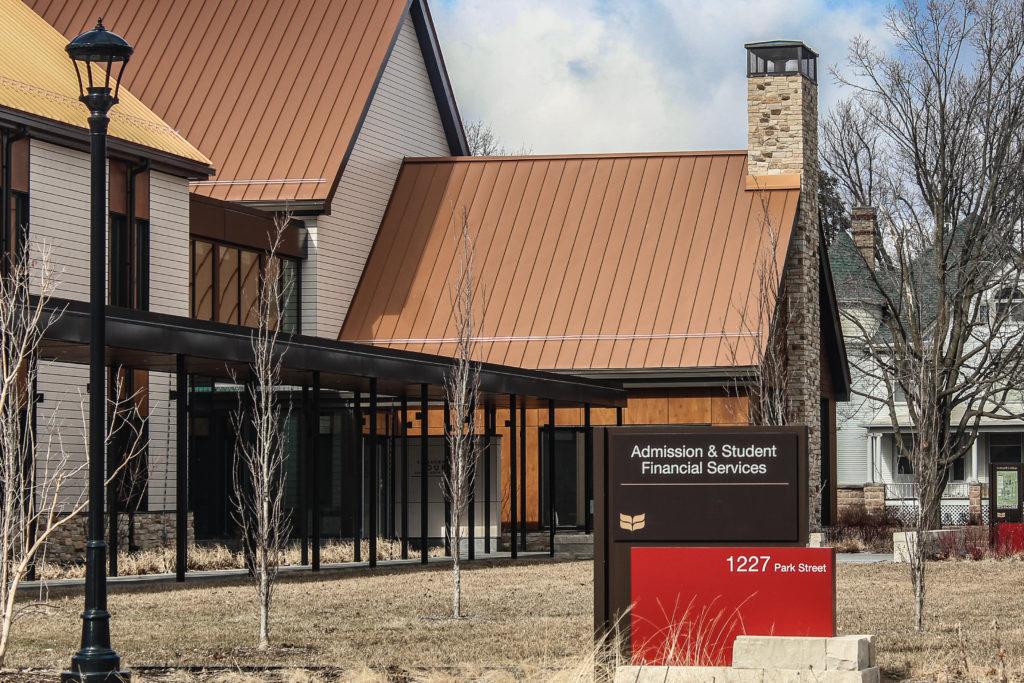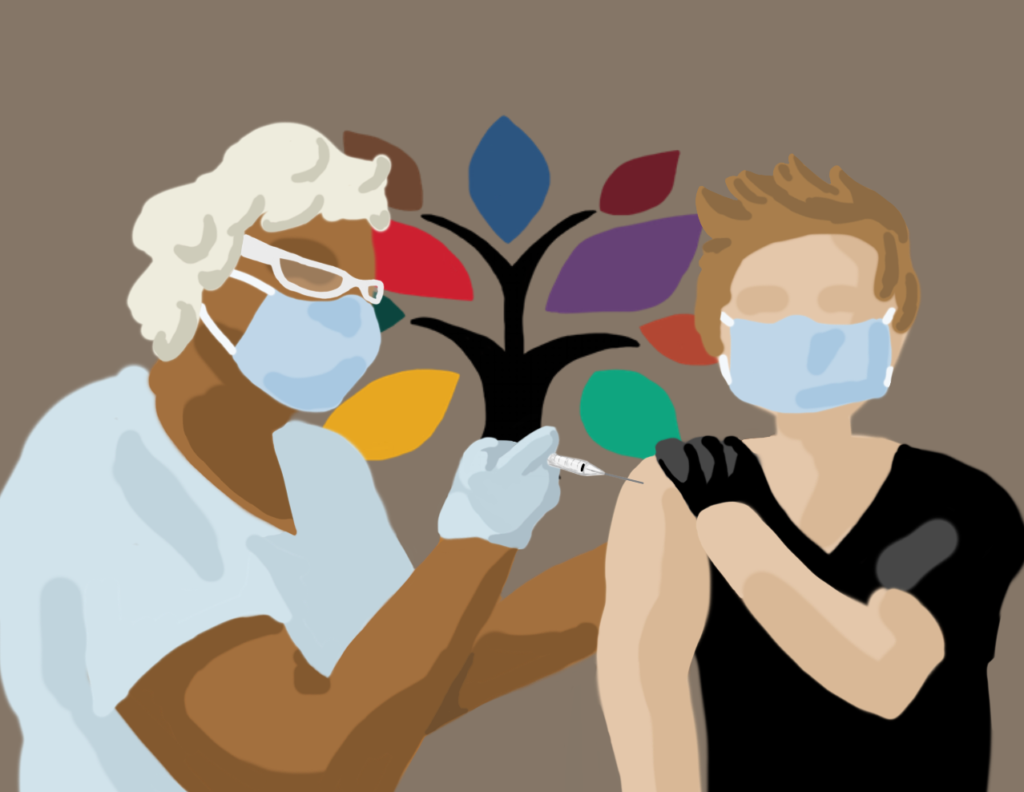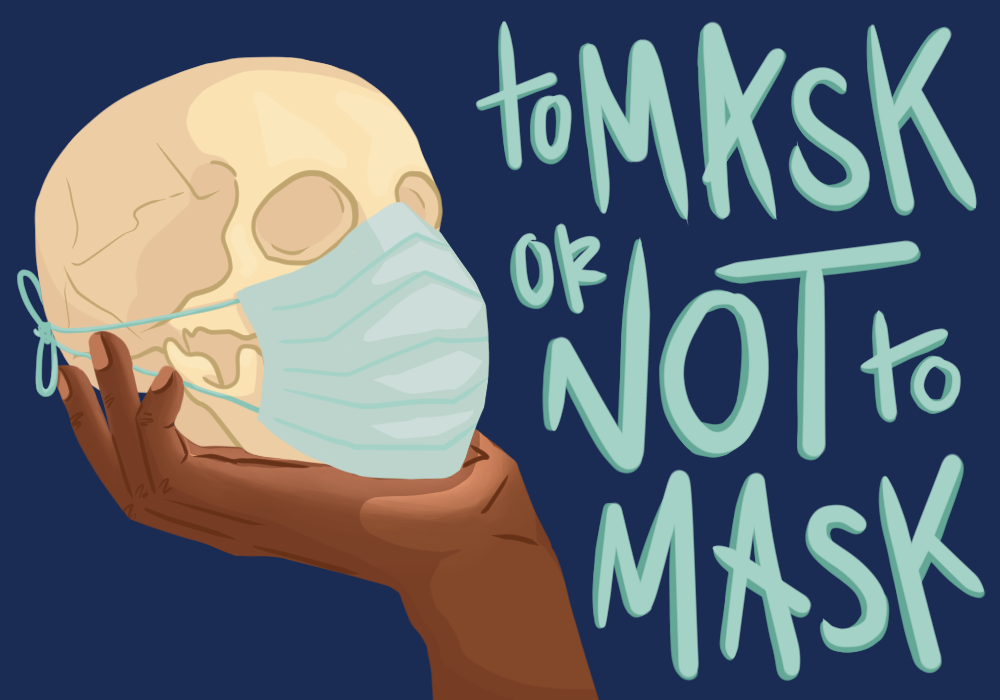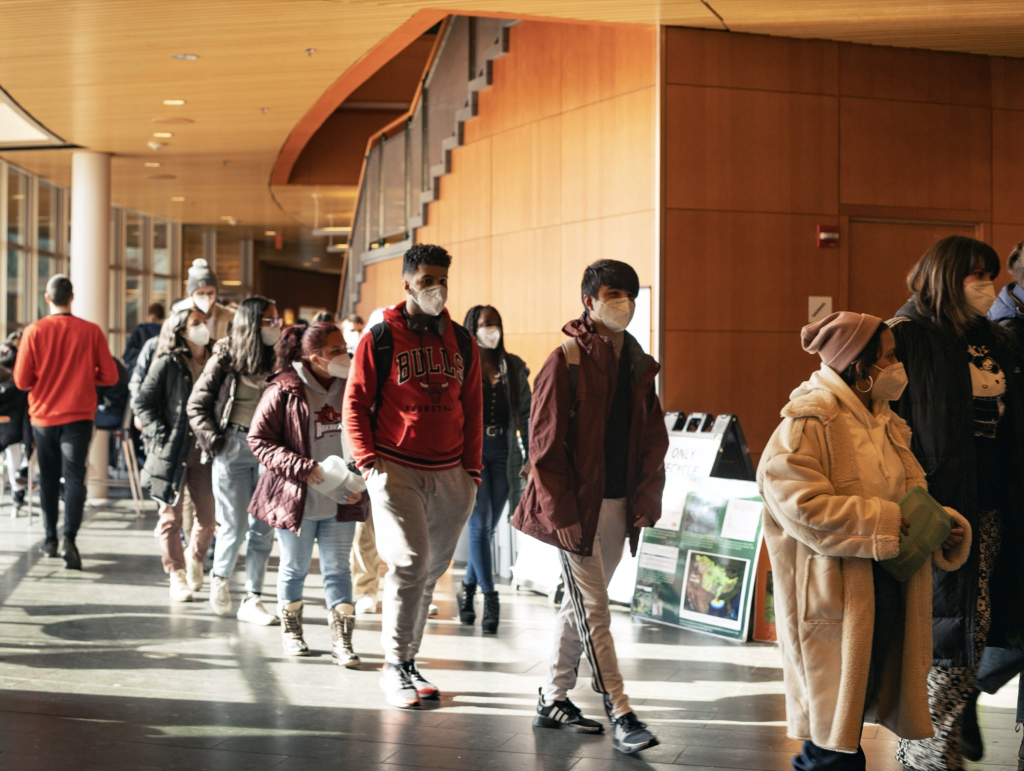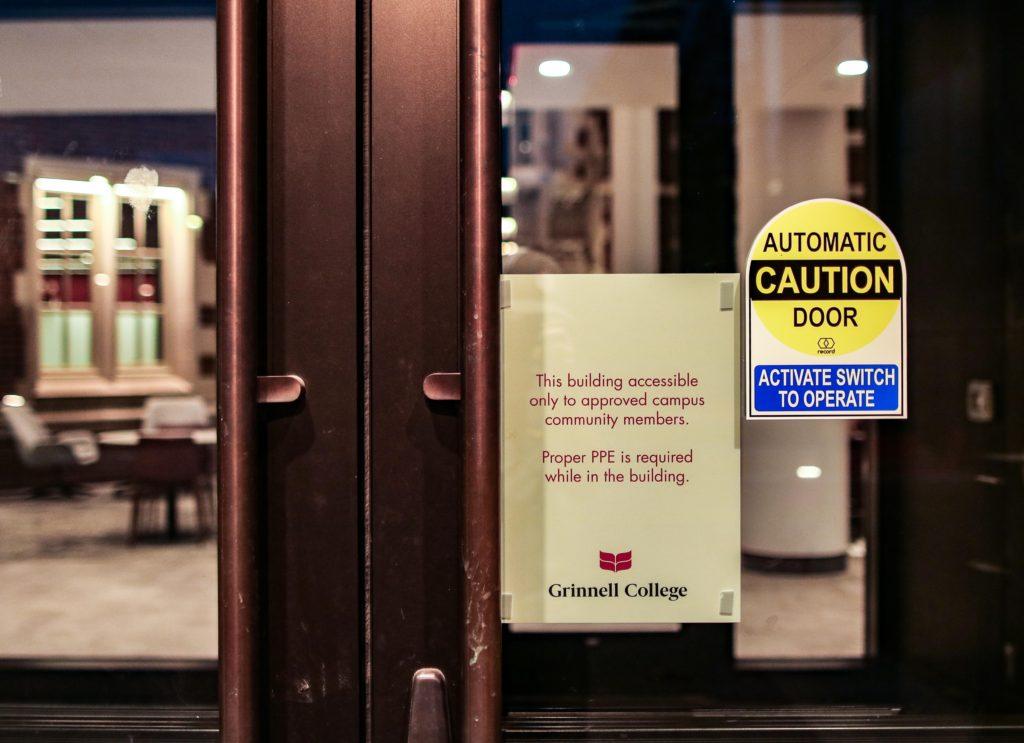Grinnell College received 10,513 applications for admissions for fall 2021, a more than 30 percent increase over last year, reflecting a national trend towards more applications to higher education institutions in a year characterized by the COVID-19 pandemic.
The increase, both at Grinnell and elsewhere, has been driven by the removal of standardized testing requirements, said Sarah Fischer, Grinnell’s director of admission.
“We’ve heard from families … that students applied to more schools and a wider range of schools because they no longer saw a test score as a possible barrier to admission,” she said. “And I think Grinnell reaped the benefits of that.”
The larger number of applications has combined with more slots reserved for students who took a gap year – about 50 this year compared to fewer than 20 in normal years – to drive Grinnell’s acceptance rate down to 10 percent, the lowest in school history.
The increase in applications comes despite severe limits on recruiting and admissions events made necessary because of the pandemic. Instead of visiting campus in person, prospective students have been given live Zoom tours of campus by admissions tour guides, said Fischer. The admissions office has also organized virtual meetings with current students and question-and-answer sessions with admissions staff.
Those efforts were enough to convince incoming student Sophia Ford, who lives in Des Moines, to apply to Grinnell early decision last November.
“Before the pandemic I was thinking more of the smaller schools outside of the state like Carleton or Scripps, or some of those smaller liberal arts schools outside of the state, but after the pandemic, I was like, hey, I’m not going out of state,” she said. “With the world events right now, it’s better for me to stay closer.”
Ford was one of 580 early decision applicants to Grinnell this year, up from just 384 last year. That’s still only about 5.5 percent of all applications, but the proportion of early decision applicants, who commit to attending Grinnell if accepted, grew slightly from pre-pandemic levels.
The pandemic conditions and the increase in the number of schools each student has applied to means that the College’s yield rate, that’s the proportion of accepted students who end up attending, is highly uncertain.

“We don’t know what the yield rate will be. We work to model all of that out using a sophisticated statistical model, to help us understand based upon the characteristics of the students we are admitting, their likelihood of attending, so it’s not like a shot in the dark,” said Fischer. “Despite our best preparations, there is a lot of uncertainty this year about yield, because students haven’t been able to visit campus. … Students have applied to more institutions this year, so presumably they’ll have more options to choose from.”
Keira Larkin, from the Washington D.C. area, was one of those students. She applied to 10 colleges this year, including Grinnell, but eventually decided to commit to attending Oberlin College in Ohio instead.
“Just looking at the prices of the colleges, it was pretty easy to narrow it down to Grinnell and Oberlin,” she said. “And then, I looked into them a bit online, and thought about how far I would want to drive. … I decided that the distance and the music culture and all of that would probably be a better fit at Oberlin.”
Larkin wasn’t able to visit Grinnell, and only visited Oberlin for the first time this month.
The impossibility of in-person visits to campus hasn’t deterred applications, though, even from international students, according to Fischer. The number of applications from students outside the United States has risen in line with the overall increase, she said.
In contrast to health and safety concerns, “the biggest concern [among international students is] … about literally just getting here, you know, visa issues, are they going to be let in,” said Fischer.
COVID-19 safety measures were a factor for Ford. “Looking at Grinnell’s response with the pandemic, that was a major thing that was like, yeah, this is the school I want to go to,” she said. “[Grinnell] closed down the earliest. You guys made sure that there was a lot of support with online school. … How careful you were to open, and how the campus took a holistic view to everything, … seeing that response, and making sure that student safety was a priority, was a big thing for me.”
According to Fischer though, this wasn’t a common concern. “Honestly, we haven’t heard a lot from families expressing concern over safety,” said Fischer. “What I’ve mostly heard from families is they want to know, are we going to be in person next year, are students going to be able to be physically around one another?”
While vaccinated students will be returning to campus next fall, the next steps for future generations of incoming students are unclear. Grinnell will still be test-optional for students applying for fall 2022, but Fischer said the administration is reviewing that policy, and may bring testing back in the future.


















































